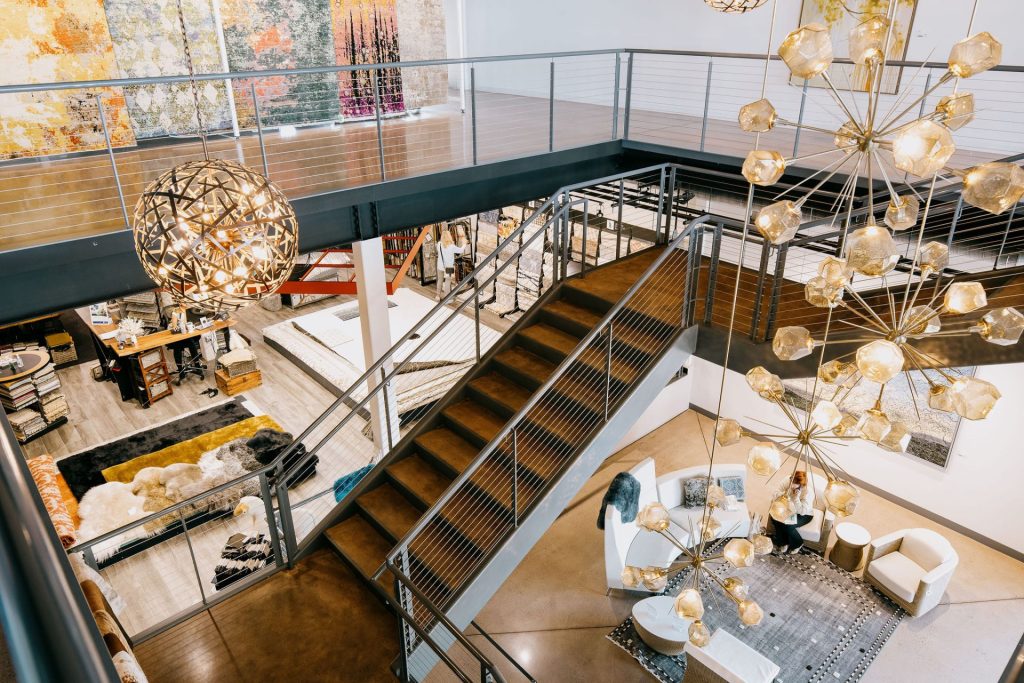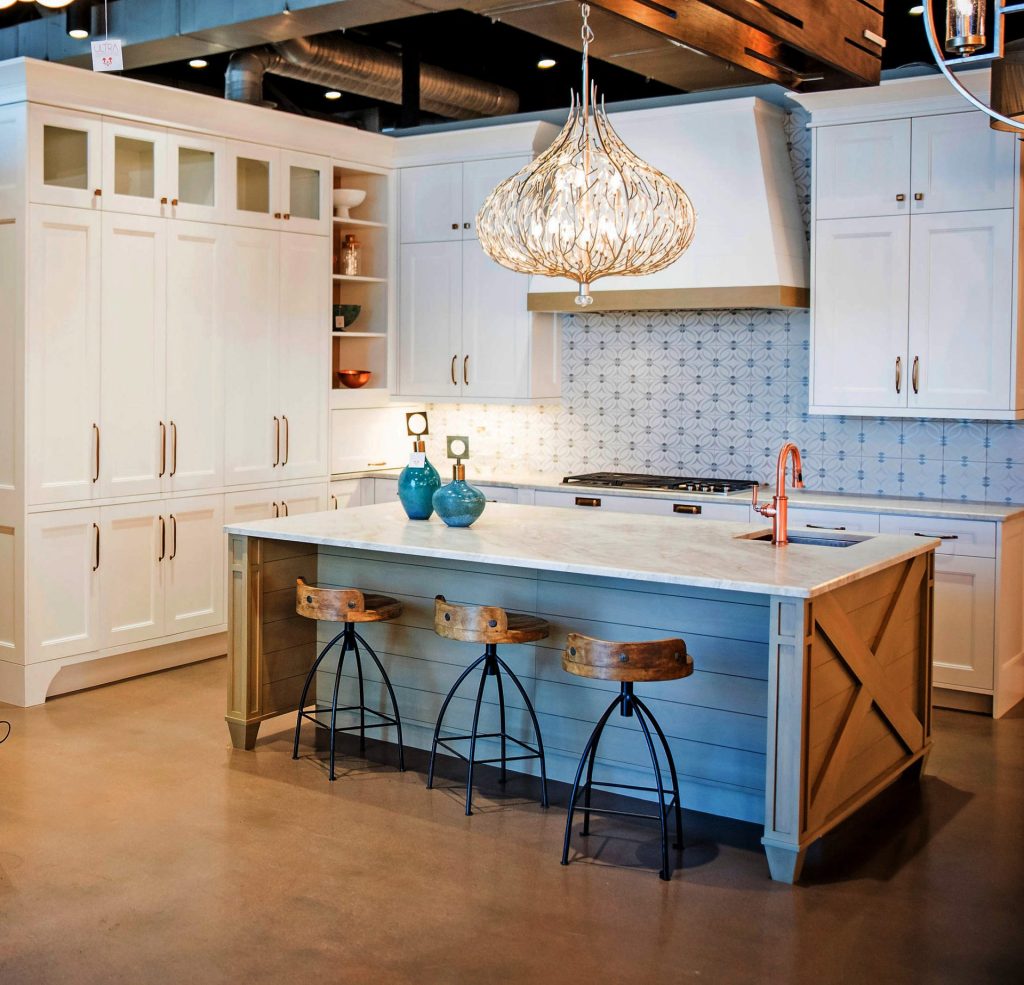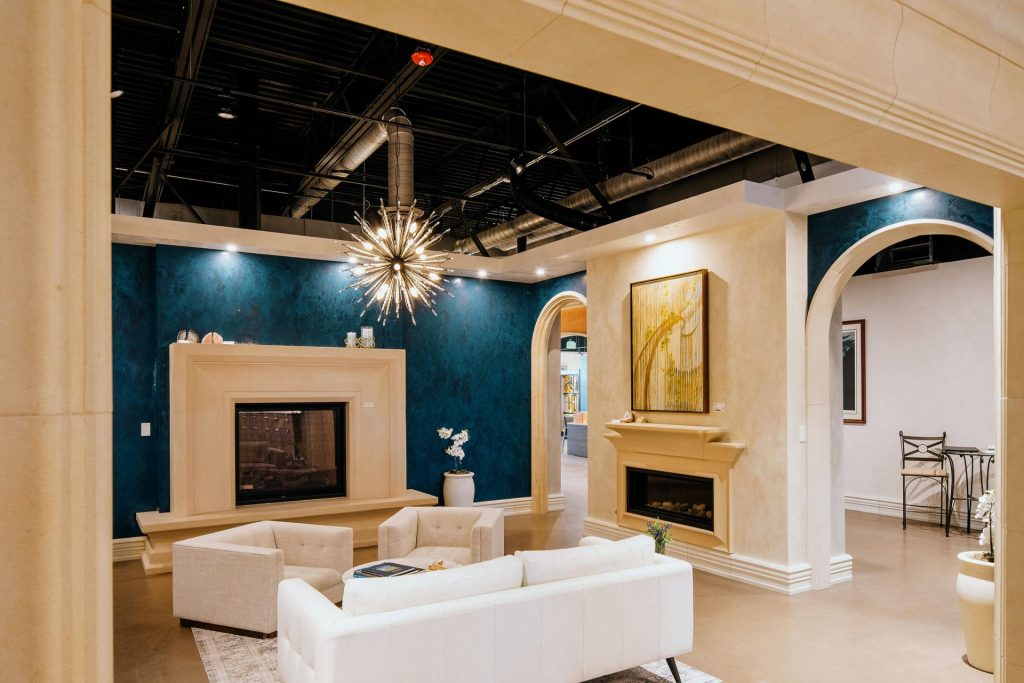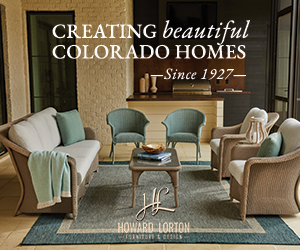How KEVIN CASTELO is reinventing the showroom experience at the IDC Building
By Harper Thomas
WHEN KEVIN CASTELO opened Ultra Design Center in Denver in the early 2000s, he quickly discovered a pain point that nearly every homeowner, designer and builder encountered: visiting multiple showrooms across town to gather materials for a single project.

It was a frustrating and inefficient experience— one he decided to solve with a bold new idea.
Enter the IDC Building, a three-story design hub located at the nexus of 6th Avenue and I-25, where convenience, collaboration and construction innovation converge. “We wanted to create a destination where somebody could come and get a lot done,” Castelo says. “Before the IDC, people would drive all over town to cobble together samples just to get comfortable that everything worked together.”
Castelo, who now owns and operates both Ultra Design Center and the IDC Building, envisioned a curated collection of showrooms under one roof, each representing a distinct product category essential to residential construction—plumbing, lighting, flooring, cabinetry, rugs and more. But unlike Home Depot’s one-size-fits-all approach, IDC focuses on high-quality materials and expert-level design guidance.
“Home Depot solved the convenience part of the equation,” Castelo explains. “But what we wanted to offer was that same level of convenience—but for people building custom or semi-custom homes.”
From the start, the IDC Building was intended to stand apart from other industry staples like the Denver Design District. While it focuses primarily on furnishings and operates as a trade-only destination, IDC Building opens
its doors to everyone involved in a construction project—whether they’re an architect, installer, designer or homeowner. “The IDC is welcoming to anybody and everybody working on a project,” Castelo says. “You don’t need a designer to escort you through the door.”
That open-door philosophy isn’t just symbolic—it’s baked into the building itself. The IDC’s 60,000 square feet flow like a well-designed department store, with showrooms seamlessly blending into one another. “We’ve designed the whole space to be about discovery,” Castelo says. “You can touch and feel products, walk through different applications and actually experience the innovations firsthand.”

Even the operational bathrooms, entry lobbies and common areas serve as working displays, constructed with showroom products that help clients visualize materials in context. This creates an environment where browsing isn’t only welcome—it’s intuitive.
“We want people to come in and learn what these products can do,” Castelo says. “Some of the bells and whistles in modern construction are genuinely innovative, and it’s hard to understand them without seeing them in action.”
Since opening in early 2019, the IDC Building has filled more than 90 percent of its showroom space. Tenants include top-tier names like T&G Flooring, Classy Closets, Inspire Kitchen Design Studio and Aztec Carpet and Rug. However, Castelo has made a strategic decision to exclude furniture showrooms due to space constraints and the building’s targeted focus on construction materials.
“We want to maintain that identity,” he says. “And honestly, furniture showrooms just take up a lot of space. Our mission is to represent all the fixtures and finishes needed for construction— without duplication within categories.”
With an open floor plan, the layout must evolve organically, and collaboration between neighboring showrooms is critical, and an emphasis on cohesion extends to the building’s vibe. The IDC Building now offers nearly everything needed for a residential construction project. And Castelo isn’t just overseeing operations—he’s hands-on in shaping its growth. In 2024, he became the sole owner of the property and took over all leasing efforts, resulting in six new showrooms opening in 2025 alone.
“The most exciting part has been finding tenants that are complementary,” he says. “We’ve got a great set of showrooms coming in, and everything is working really cohesively.”
Clients can come in with a designer or browse solo. They can visit during the week or pop in on a Saturday to sign off on selections. “We’re very customer-centric,” Castelo says. “We really try to accommodate however people want to experience the space.”
More than just a place to browse samples, the IDC is becoming a networking hub for Denver’s residential construction industry. Monthly events—ranging from Valentine’s Day markets to holiday vendor fairs—create opportunities for trade professionals to build relationships and keep up with industry trends.

“Construction is tricky,” Castelo acknowledges. “For most homeowners, it’s a once-in-a-decade or even once-in-a-lifetime experience. But for trade pros, it’s their day-to-day. We focus our events on that trade customer—the designer or builder doing four or five projects a year.”
Despite its central location and impressive roster of showrooms, Castelo says many in the industry still haven’t heard of the IDC Building. Rather than seeing that as a shortfall, he sees it as an opportunity. “To know that there are still designers and builders out there who haven’t even heard of us—that’s what’s exciting,” he says. “We have a strong base, but there’s so much room for growth.”
Whether it’s the thoughtfully integrated warehouse space, the curated product categories or the democratic approach to customer experience, Castelo’s vision is clear: Make construction easier, smarter and more connected.
IDC BUILDING
590 Quivas St. Denver 303.825.1103 idcbuilding.com


